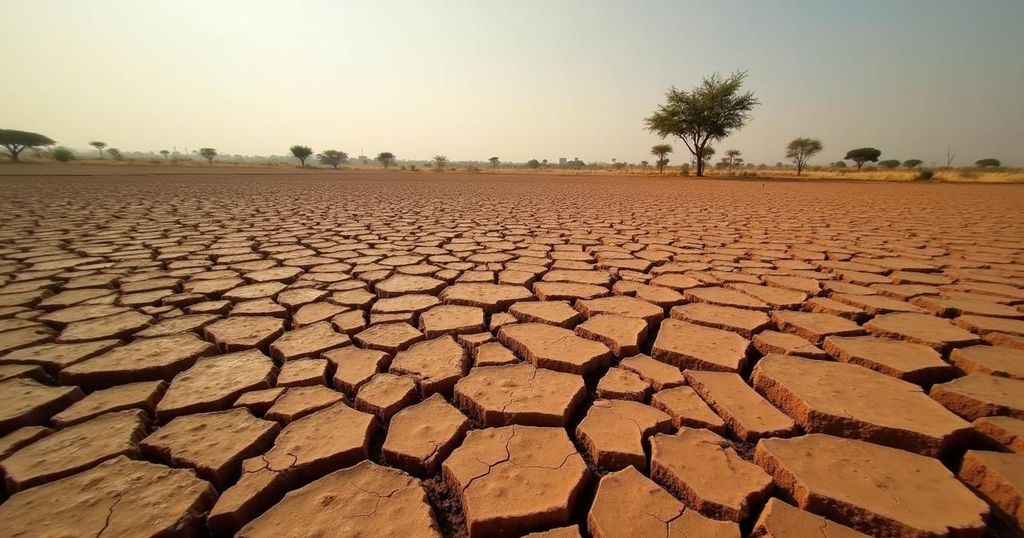Historic Drought Devastates Southern Africa, Leaving Millions at Risk

The worst drought in a century is currently devastating Southern Africa, affecting over 27 million people and leaving 21 million children malnourished. Nations such as Lesotho, Malawi, Namibia, Zambia, and Zimbabwe have declared national disasters due to crop and livestock losses. The crisis, exacerbated by climate change, is projected to worsen until the next harvests in early next year.
In Southern Africa, more than 27 million individuals are facing severe food insecurity due to the worst drought in a century, as stated by the United Nations World Food Programme (WFP). The drought has rendered significant regions, including Lesotho, Malawi, Namibia, Zambia, and Zimbabwe, as national disaster areas after destroying crops and livestock. Angola and Mozambique are also experiencing critical effects from this crisis, which is expected to worsen until the next harvests scheduled for March or April of the following year. WFP spokesperson Tomson Phiri remarked, “A historic drought – the worst food crisis yet – has devastated more than 27 million lives across the region. Some 21 million children are malnourished.” The onset of the lean season in October has triggered alarming predictions that conditions will deteriorate monthly until the upcoming harvest. Many families in these areas rely on small-scale agriculture dependent on rainfall, which has been critically low. The El Niño weather phenomenon, responsible for diminished rainfall patterns since last year, has exacerbated this crisis. Furthermore, rising temperatures attributed to climate change have intensified drought conditions. As of July, UN officials declared it the worst drought the region has witnessed in a century, with staggering losses of up to 70 percent of harvests in Zambia and 80 percent in Zimbabwe, according to Lola Castro, the WFP’s acting regional director for southern Africa. The prolonged lack of rain has also severely reduced hydropower generation, leading to significant electricity shortages. In response to resource strains, authorities in Namibia and Zimbabwe have begun culling wildlife, including elephants, to provide sustenance for the struggling population.
The article addresses the dire situation facing Southern Africa amid an unprecedented drought that has decimated food sources and threatened the livelihoods of millions. Primarily exacerbated by climate change and the El Niño phenomenon, this crisis has led to declared national disasters across multiple nations in the region. With rising temperatures and irregular rainfall patterns, the vulnerability of sub-Saharan Africa’s reliance on rain-fed agriculture is evident, underscoring the challenges these nations face in achieving food security and climate resilience.
In summary, Southern Africa is grappling with the worst drought in a century, impacting the lives of over 27 million individuals, including 21 million malnourished children. The situation, driven by climate change and insufficient rainfall, has devastated agriculture, leading to humanitarian crises in several nations. The potential for recovery appears slim as the region braces for continued hardship until the next harvest. Urgent interventions are required to alleviate this crisis and support affected communities.
Original Source: www.aljazeera.com






